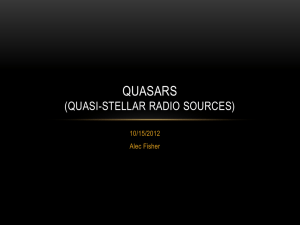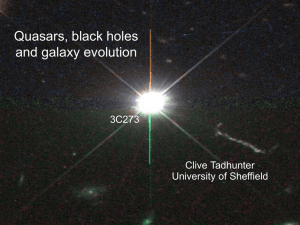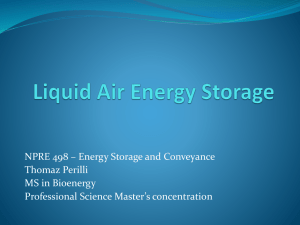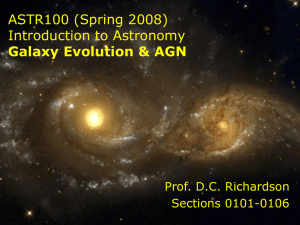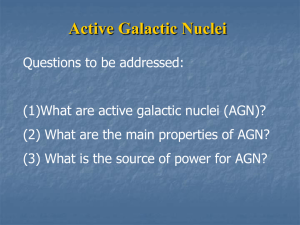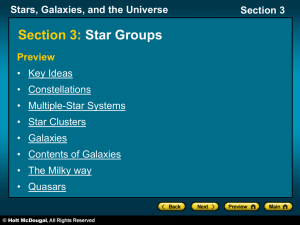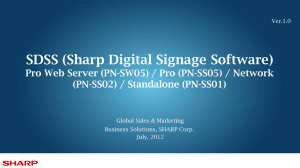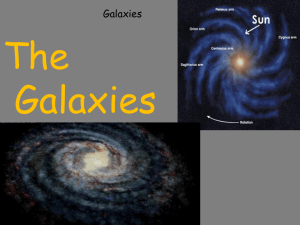Spectroscopically Confirmed Galaxies at z >= 6
advertisement
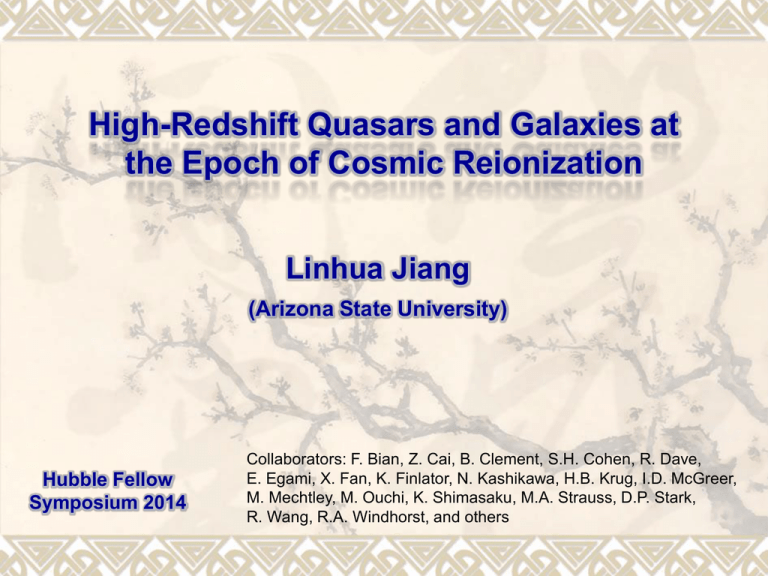
High-Redshift Quasars and Galaxies at the Epoch of Cosmic Reionization Linhua Jiang (Arizona State University) Hubble Fellow Symposium 2014 Collaborators: F. Bian, Z. Cai, B. Clement, S.H. Cohen, R. Dave, E. Egami, X. Fan, K. Finlator, N. Kashikawa, H.B. Krug, I.D. McGreer, M. Mechtley, M. Ouchi, K. Shimasaku, M.A. Strauss, D.P. Stark, R. Wang, R.A. Windhorst, and others Cosmic reionization and high-z objects Cosmic reionization • Neutral IGM ionized by the first astrophysical objects at 6 < z < 15 • Evidence: CMB polarization + GP troughs in quasars + … High-z (z ≥ 6) objects • Quasars and galaxies • SNe and gamma-ray bursts • Responsible sources for reionization (Robertson 2011) Outline High-z galaxies • A large sample of spectroscopically-confirmed galaxies at z ≥ 6 • UV continuum slopes • Galaxy morphology • Lyα luminosity function (LF) at z > 5.7 and implication for reionization High-z quasars • Surveys of z ≥ 6 quasars using the SDSS data • Quasar LF and implication for reionization Part I. High-Redshift Galaxies Current studies • HST + the largest ground-based telescopes • A few hundred galaxies or candidates at z ≥ 6; many at z ≥ 8 (e.g.; Bouwens 2011; Oesch 2012; Ellis 2013; and many more papers) One issue • Mostly done with photometrically-selected LBGs with decent IR data (e.g., several HST ultra/deep fields) • Lack of a large spectroscopically-confirmed sample with deep IR data (HST + Spitzer) A simple idea • HST and Spitzer imaging of spectroscopically-confirmed galaxies in the Subaru Deep Field (SDF) and Subaru-XMM Deep Field (SXDS) • The largest sample of spec-confirmed galaxies at z ≥ 6 A study of spectroscopically-confirmed galaxies at z ≥ 6 Our galaxy sample • About 70 galaxies from z = 5.6 to 7.0, including LBGs and LAEs • Three HST programs and two Spitzer programs (PIs: Jiang and Egami) Our imaging data • Optical data from Subaru Suprime-Cam (PSF ≈ 0.6−0.7”) • Broad-band data (AB mag at 3σ): BVRi ≈ 28.5, z ≈ 27.5, y ≈ 26.5 • Narrow-band data (26 mag): NB816 and NB921, NB973 (25 mag) • HST near-IR data (~2 orbits per band): WFC3 F125W (or F110W) and F160W • Spitzer mid-IR data (3 ~ 7 hrs): IRAC 1 and 2 A new large Spitzer program (PI: Jiang) just approved last year (total 132 hrs). Rest-frame UV continuum slope UV continuum slope β (fλ ~ λβ) • • • • –1.5 ≤ β ≤ –3.5; median β ≈ –2.3 Slightly steeper than LBGs in previous studies (β ≈ –2 ~ –2.1) The β – M1500 relation is weak at the bright end LAEs do not have steeper β than LBGs (Jiang et al. 2013a) Extremely blue galaxies Statistically significant excess of galaxies with β ~ –3 Nearly zero dust and metallicity + extremely young + … Current simulations cannot produce β ≤ –3 (Finlator 2011) How to: top-heavy IMF, high escape fraction, etc. (e.g. Bouwens 2010) (Jiang et al. 2013a) Lyα morphology in LAEs Diffuse Lyα halos 2<z<3 (Steidel 2011) Based on ground-based NB (Lyα) images At low redshift: controversial At high redshift: predicted by simulations z = 3.1 LAEs (Matsuda 2012) z = 3.1 LAEs (Feldmeier 2013) z = 5.7 LAEs (Zheng 2011) No Lyα halos found at z=5.7 and 6.5 Stack 43 LAEs at z=5.7 and 40 LAEs at z=6.5 Stacked images: resolved but not very extended Possible reasons: dust, halo distribution, or no halos, etc. 20” x 20” (Jiang et al. 2013b) Deep spectroscopy of a z=7.7 LAE candidate Observations Target: brightest z=7.7 LAE candidate from Krug et al. (2012) Instrument: LUCI on the 2×8.4m LBT; tint = 7.5 hrs, with good conditions Results: non-detection not a LAE at z=7.7 (confirmed by Faisst 2014) Acquisition star (J=15) Reference star Reference star (J=18.5) LAEz7p7 E N LAEz7p7 Faint galaxy (J=22.6) Faint galaxy Observed Lyα LF at z ≥ 5.7 Rapid evolution from z = 5.7 to 6.5 based on a large sample of LAEs A z=7 LAE and a z=7.2 LAE suggest such a trend towards higher redshift The upper limit at z=7.7 is >5 times lower than the z=6.5 LF Explanations: • Not likely by intrinsic evolution • Likely by neutral IGM • Lyα reduced by a factor of two (Jiang et al. 2013c) Part II. High-Redshift Quasars Quasars are boring: z ~ 6 quasars look similar to z ~ 0 quasars z~6 composite Lya Low-z composite z = 7.08 NV OI SiIV Lya forest (Mortlock 2011) (Jiang et al. 2007) zAB < 20 AB mag in the SDSS Surveys of z ≥ 6 quasars The first z~6 quasars found by the SDSS main survey (Fan 2000−2006) Followed by the SDSS deep survey (Jiang 2008,2009), the CFHTQS (Willott 2005−2010), the UKIDSS (Venemans 2007, Mortlock 2009,2011), the Pan-STARRS1 (Morganson 2012, Banados 2014), and the VISTA VIKING (Venemans 2014) More than 60 quasars have been found so far, half of them found by the SDSS The most distant one at z = 7.08 (Mortlock 2011) Three quasars at z > 6.5 (Venemans 2014) Surveys of high-z quasars Quasars (z ~ 6) in the SDSS • High-z quasars in the SDSS main survey • High-z quasars in the SDSS deep survey (Stripe 82) • High-z quasars in the SDSS overlap regions Quasars in the SDSS main survey • A total of 14555 deg2 of unique sky area (Ahn 2012) • Completed: 8500 deg2 (Fan 2000−2006); zAB < 20 mag • To do: >4000 deg2 Quasars in the SDSS deep survey • Stripe 82: a total of ~300 deg2 • −60° (20h) < RA < 60° (4h) • −1.26° < Dec < 1.26° • Repeatedly scanned 70-90 times by the SDSS • Two mag deeper than single-epoch data • Depth-optimized co-adds by Jiang et al. (2014a) • Current survey status: almost completed; 12 quasars published; 1 to be published −60° 0° 60° (Jiang et al. 2014a) zAB < 21 mag zAB < 22 mag Quasars in the SDSS overlap regions • SDSS: drift scan along great circles • Adjacent runs overlap • A total of >3000 deg2 • Allow selection of quasars ~0.5 mag fainter (Jiang et al. 2014b) Quasar luminosity function at z ~ 6 SDSS main+deep (Jiang et al. 2009, AJ, 138, 305) SDSS + CFHTQS (Willott et al. 2010, AJ, 139, 906) Quasar contribution to the UV background: Double power-law QLF ϕ(M1450) = ϕ* / (100.4(α+1)(M1450-M1450*) + 100.4(β+1)(M1450-M1450*) ) β = −3 α = [−2.2, −1.2] M1450* = [−25, −21] Results: Not sensitive to α, but strongly depends on M* and clumping factor C Quasar/AGN population can provide enough photons only if the IGM is very homogeneous and the break luminosity is very low Search for z>6.5 quasars in Stripe 82 • Stripe 82 data + VISTA VHS J and K-band data • Need Y-band imaging data g r i z J K Brand new: Close companions to z ~ 6 quasars in HST images Summary A systematic study of spectroscopically-confirmed galaxies at z ≥ 6 Steep UV continuum slopes No diffuse Lyα halos were found around LAEs Rapid evolution of Lyα LF from z=5.7 to 7.7 caused by the IGM Surveys of z~6 quasars using the SDSS data Quasar luminosity function and its implication Future search for z>6.5 quasars in the SDSS stripe 82 Quasar close companions
